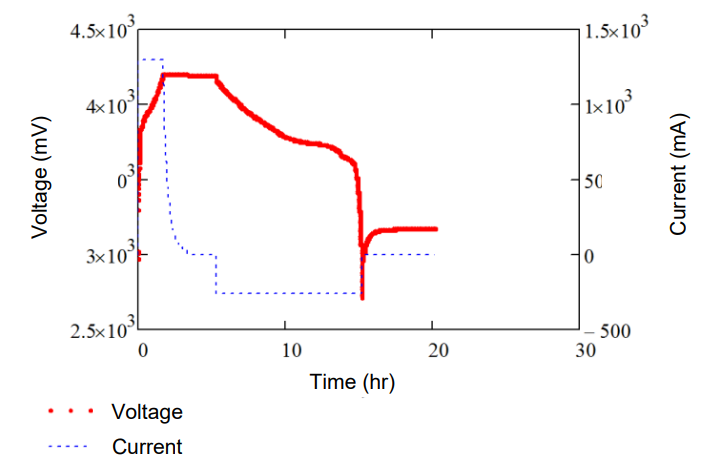SLUUCH4A October 2021 – October 2023 BQ27Z746
- 1
- Abstract
- Trademarks
- 1 Software Setup
- 2 Troubleshooting Unexpected Dialog Boxes
- 3 Hardware Setup
- 4 Using bqStudio
- 5 Calibrating Gauge Measurements
- 6 Protections
- 7 Chemical ID
- 8 Learning Cycle and Golden Image
- 9 Gauge Communication
- 10BQ27Z746-Based Circuit Module
- 11Circuit Module Physical Layout, Bill of Materials, and Schematic
- Revision History
7.1 Chemical ID Selection Process Description
The test consists of the following steps:
- Test is performed at room temperature. If the cell was at a different temperature, let the cell relax for two hours at room temperature prior to the test.
- Charge using CC or CV charging to full using taper current (for example, C/100). Use nominal CC charge rate and CV voltage. If another charging method is specified by the cell maker, use that method.
- Let the battery relax for two hours to reach full equilibrium open circuit voltage (OCV).
- Discharge the battery at C/10 rate until the minimal voltage (as specified by the cell manufacturer) is reached.
- Let the battery relax for five hours to reach full equilibrium OCV.
Figure 8-1 shows an example of what this process looks like graphically.
 Figure 7-1 Graph of IV Data in
Charge-Relax-Discharge-Relax
Figure 7-1 Graph of IV Data in
Charge-Relax-Discharge-Relax